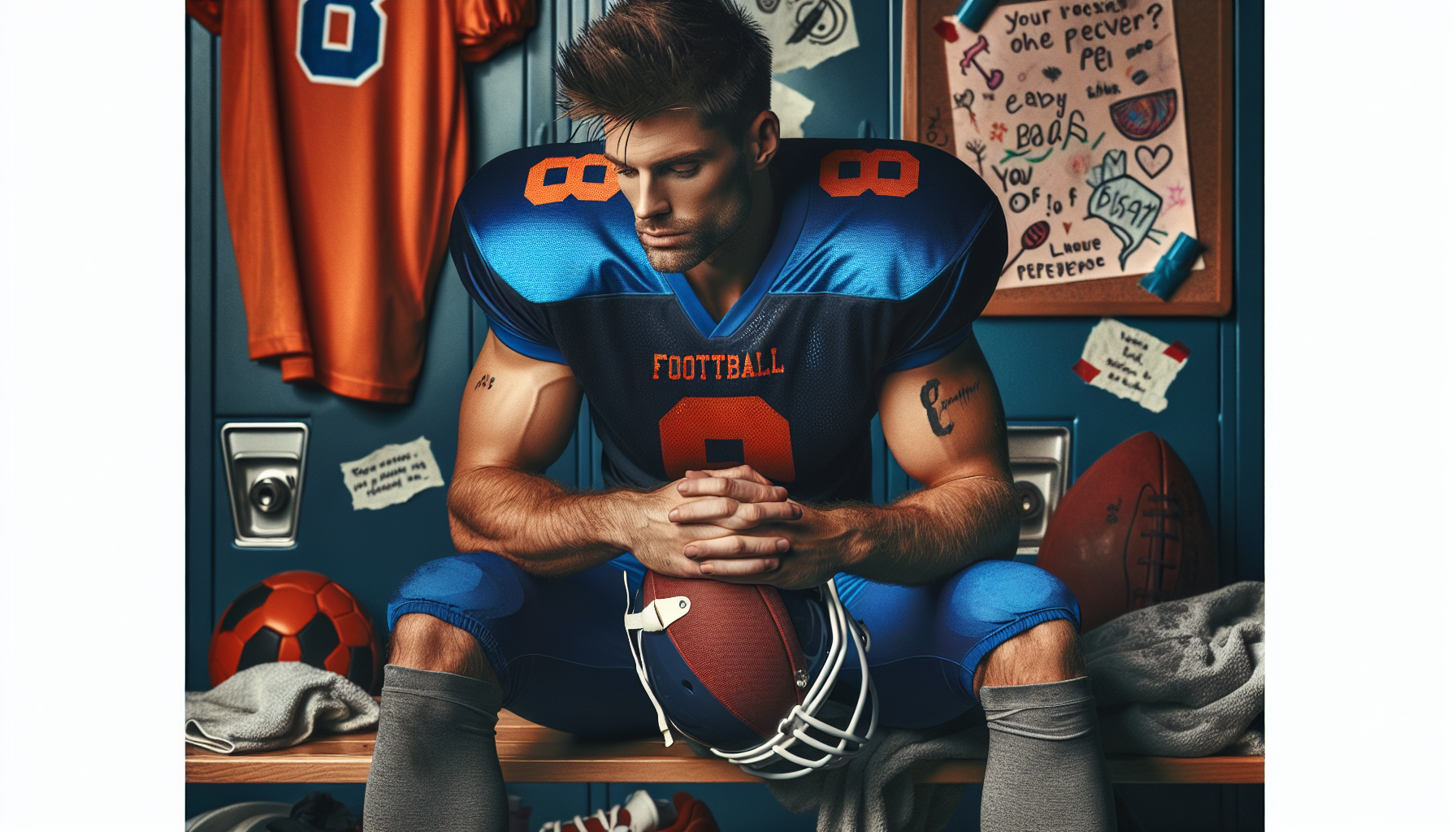In the high-stakes world of professional football, player safety has become a prominent concern, especially regarding head injuries. Recently, Malik Nabers of the New York Giants found himself at the heart of this discussion after sustaining a concussion in a critical game. Nabers’ experience sheds light on the concussion recovery process and the impact such injuries have on athletes.
The Reality of Concussions in the NFL
Concussions in professional sports, particularly in football, are not just a matter of concern but of pressing research and action. Annually, the NFL sees a significant number of such injuries, prompting ongoing improvements to protocols and equipment designed to protect players. The case of Malik Nabers adds a personal narrative to this evolving story.
After suffering a concussion, Nabers reported a concerning symptom: he couldn’t recall the events immediately following the injury. This lapse in memory is a common result of brain injuries, often leading to additional stress for players who rely on their cognitive skills as much as their physical prowess on the field.
Understanding the Impact of Concussions
Concussions are classified as traumatic brain injuries (TBIs), and they can vary significantly in severity. The immediate effects include headaches, confusion, and memory issues, as was the case with Nabers. However, the long-term impacts can be much more profound, affecting cognitive function, emotional equilibrium, and even physical coordination.
Repeated concussions are especially dangerous, leading to conditions such as Chronic Traumatic Encephalopathy (CTE). The NFL has been proactive in addressing these issues with rigorous concussion protocols and return-to-play criteria that are regularly updated and informed by cutting-edge research.
Recovery and Rehabilitation Process
For a professional athlete like Nabers, the recovery process is carefully managed. Following a suspected concussion, the first step involves removing the player from play and conducting a thorough medical evaluation. This includes neurocognitive tests to establish a baseline for brain function and monitor progression.
The rehabilitation process is multi-faceted, often involving:
- Rest and Recovery: Initial treatment focuses on allowing the brain to heal through rest. This phase is crucial and demands minimal physical and cognitive exertion.
- Gradual Return to Activity: Athletes gradually resume physical activities under medical supervision. The approach is methodical, ensuring that no symptoms re-emerge before progressing to more intense exercises.
- Emotional and Psychological Support: Given the psychological impact of concussions, access to mental health resources is vital. It helps athletes manage anxiety about returning to the field and cope with potential mood swings.
- Continued Monitoring: Even after a player returns, ongoing monitoring ensures that any recurring symptoms are addressed promptly.
Supporting Concussion Awareness
Raising awareness is a crucial component of tackling concussion issues in sports. Initiatives such as the Centers for Disease Control and Prevention (CDC) guidelines offer essential information on how concussions occur, signs to watch for, and the importance of seeking medical attention.
The NFL’s partnership with research institutions to further understand and mitigate the effects of TBIs highlights the collaborative efforts required to advance player safety. Moreover, former players advocate for continued improvements, sharing personal stories to illuminate the ongoing fight against concussion-related issues.
Malik Nabers’ Insights and Experience
In speaking about his recovery, Nabers emphasizes the importance of being honest about symptoms and trusting the experts guiding his recuperation. His experience underscores a critical message: athlete well-being should always take precedence over immediate game performance.
Nabers’ journey through concussion recovery reveals the strength and support systems in place for athletes. It also highlights the potential for players to return to their peak form while reiterating the broader conversation about player safety and health post-injury.
Innovations in Player Safety
Innovations in protective gear, alongside refined detection and treatment protocols, demonstrate significant strides in improving football’s safety landscape. Advanced helmet designs, better on-field diagnostic tools, and comprehensive post-injury guidelines represent the ongoing commitment to player health.
For leagues to preserve the integrity of the sport without compromising player safety, adopting science-backed research and technology is imperative.
Looking Forward: The Future of Concussion Management
The journey of players like Nabers is part of a larger narrative that continues to unfold within the NFL. The league’s proactive stance on concussion management sets a standard for other sports organizations worldwide, underscoring the benefits of rigorous protocols and comprehensive care.
Continuing to prioritize player education, improve symptom diagnosis, and foster innovations in safety equipment will shape the future of sports in a way that values the long-term health and careers of athletes.
As the dialogue around concussions evolves, the partnership between sports organizations, medical experts, and athletes remains essential for promoting a safer and more informed approach to managing these injuries in sports. The lessons from Malik Nabers’ own experience will undoubtedly contribute valuable insights into improving this vital aspect of football and beyond.
For further detailed insights into managing concussions, references like the Mayo Clinic’s comprehensive guide can provide additional information on the subject.

